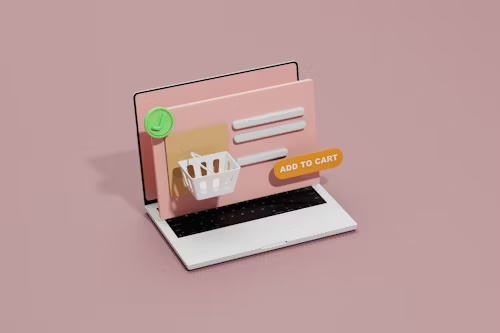When you browse an internet store, do you ever feel good about yourself? Offering free shipping or gift wrapping can make you feel cared for, or it can be a comforting experience because of the wonderful user experience.
Your ecommerce website design serves as your online identity in the ecommerce industry. It should be your brand and make you stand out.
Converting visitors into buyers and encouraging repeat business are the biggest challenges facing ecommerce businesses. For this reason, while creating a website, you should never undervalue the importance of a well-designed user experience. These ten recommended practices for ecommerce will help you increase sales.
Top practices to improve ecommerce sales growth
- Intuitive navigation
It is useless to have a beautiful website if it is difficult to use. Complex navigation, hidden menus, and endless scrolling all have a detrimental effect on user experience and, so, final sales. Hick’s Law tells that a user will need more time to finish a task if they have more options. Customers will switch to your competition if they realise they are wasting their time on pointless tasks.
Avoid using general terms like “products” or “what we do” in descriptive menu labels. They negatively affect SEO in addition to the user experience.
Customers will find it easier to find exactly what they’re looking for if there are fewer choices on the menu. Because simplified menus will enable your homepage to transfer its authority to less authoritative sites, this will improve your SEO.
This implies that your website should function just as well on mobile devices as it does in desktop browsers. Here, using motions like pinching, swiping, etc., is crucial. Take into account pop-ups and drop-down menus when designing a mobile version of your website, as these features may be constrained by the smaller screen.
- Check out without hustle
Keep the checkout brief. If there are fifteen mandatory form fields at checkout, many consumers may simply abandon your site and never return. First of all, when a customer is making a purchase, don’t make them register. Let them decide for themselves whether or not they wish to register for an account or join your mailing list. However, make the registration process as easy as possible if they choose to do so. Request that they only enter the information that is crucial to you, such as your password, phone number, and email address.
- Make it easy to find products.
Find out which categories are most essential to individuals and which ones work well by conducting research. Make sure your product categories and subcategories make sense so that your clients can find what they’re looking for with ease.
Adding a search box to the website will further simplify product discovery. In this manner, you will also be able to decide which products are most often searched for or what you should include in your catalogue. A good search bar enables consumers to scan barcodes or search for products by their product code.
- Bright but simple design
Customers should be drawn in and persuaded to click on the call-to-action button. Don’t be scared to use vibrant colours or make it large. The most crucial details ought to be visually appealing.
On the other hand, over the past seven years, minimalist ecommerce web design has become more popular. A design with only enough components to maintain both functionality and aesthetic appeal is known as a minimal user experience (UX). Try using no more than three colours. To maintain consistency, use the different hues of your brand’s colours.
- Commonly Asked Questions
Customers may quit your website if they aren’t convinced whether to buy from you. Convincing visitors that they want to become your customers is possible with an FAQ page. The page’s purpose is to minimise purchasing anxiety by providing answers to the most frequently asked concerns, as the name implies. A fantastic FAQ page is full of useful advice and is written in an upbeat style. To make everything more understandable, screenshots and pictures may also be included.
- Simple layout
The purpose of the homepage is to interact with and establish a relationship with the user. The product page, however, is what converts a visitor into a paying client. Product pages should be designed to inform customers about your offerings, pique their interest, and encourage them to click the “buy now” button. Give clients all the information you want them to know about your product. Emphasise the special qualities, measurements, and contrast with other products. If it comes in a variety of hues or sizes, let us know. Not a machine, but a person, describe the items. Amazon has a reputation for explaining things as if you were speaking to your loved ones.
Conclusion
The success of your online store depends on providing a fantastic user experience. It is what draws in visitors and turns them into devoted clients. The fundamentals are no longer sufficient; to make your customers feel special, you must apply eCommerce UX best practices and provide something distinctive.
Whatever approach you decide on, don’t forget to stay in touch with your clients and make their experience unique. Make an appointment for a chat with our professionals to realise your idea if you want to create your ecommerce website design and increase sales!



